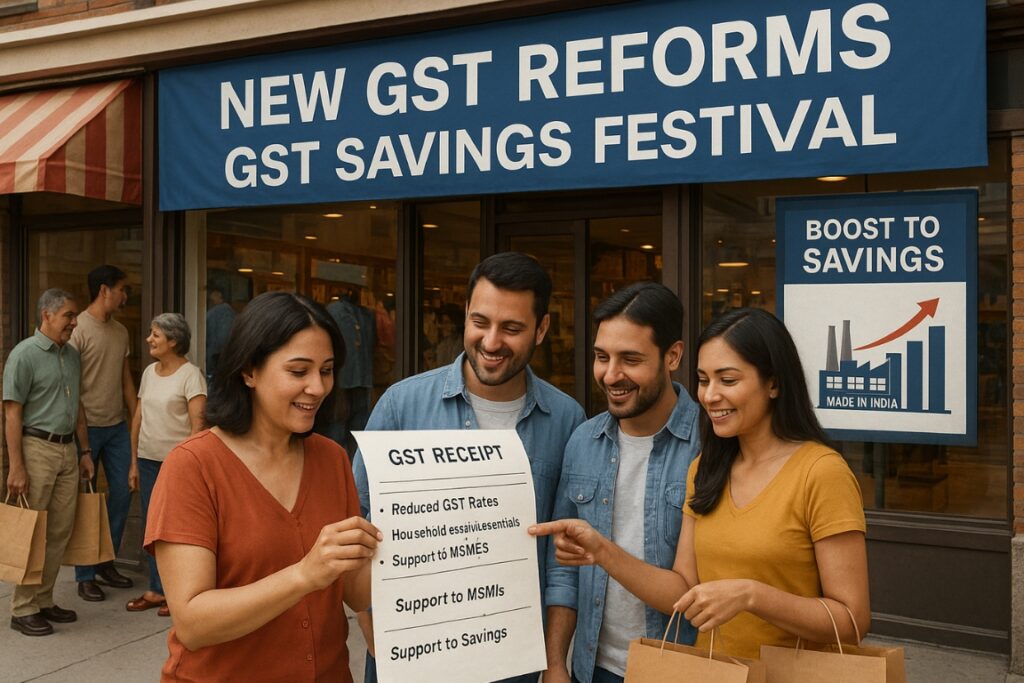Prime Minister Narendra Modi called upon citizens to celebrate a “GST Savings Festival”, highlighting that the new GST structure will accelerate growth, boost savings, and benefit all sections of society.
Background
- The Goods and Services Tax (GST) was introduced in 2017 to replace multiple indirect taxes with a unified system.
- It was framed on the principle of “One Nation, One Tax”, ensuring uniformity in taxation across states.

Key Features of the New GST Reforms
- Lower Tax Burden: Reduced GST rates on household essentials and daily-use goods.
- Boost to Savings: Promotes higher disposable income for households and businesses.
- Support to Businesses: Particularly benefits farmers, traders, MSMEs, and local manufacturers.
- Simplified Structure: Eases compliance for industries while ensuring transparency.
Economic Impact
- Increase in GDP: Expected to add nearly ₹20 lakh crore to the current GDP of about ₹330 lakh crore.
- Strengthening Manufacturing: Encourages purchase and sale of Made in India products, supporting Aatmanirbhar Bharat.
- Investment Climate: Reforms aim to attract investment by lowering production costs and improving ease of doing business.
Cooperative Federalism
- The GST Council, with active participation of both Centre and States, plays a key role in rate decisions.
- Reforms reflect Centre-State cooperation in ensuring pro-people measures.
- States are urged to promote industry, improve infrastructure, and support manufacturing growth.
Broader Significance
- Citizen-Centric Approach: Reduced prices for essential items improve affordability.
- Inclusive Growth: Benefits all sections of society, from rural households to urban businesses.
- Strategic Goals: Aligns with India’s vision of becoming a developed nation by 2047.
Conclusion
By lowering tax rates, encouraging domestic manufacturing, and strengthening cooperative federalism, they lay the foundation for a self-reliant and globally competitive India.





